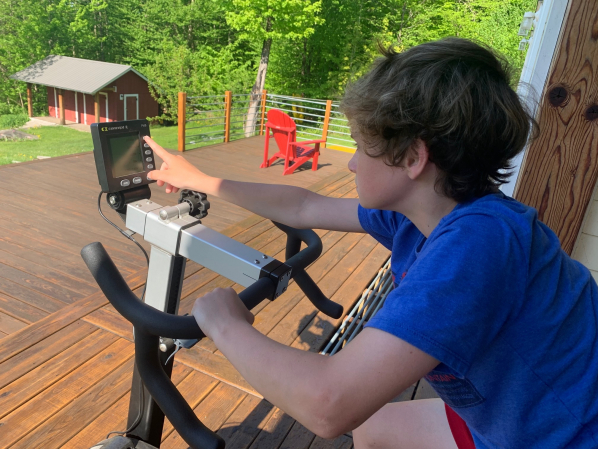Home Schooling with Concept2: Fractions in Time and Distance
 Hey kids! Here’s some exercise for both your brain and your body!
Hey kids! Here’s some exercise for both your brain and your body!
Step 1: Set up a 12-minute workout on the Performance Monitor and row, ski or bike until the time is up. Record the total number of meters you got.
Step 2: Divide the total time of 12 minutes into fractions: ½, 1/3, ¼, and 1/6, and fill in those times in a chart like the one below. Then, divide your total meters into the same fractions, and add those smaller distances to the chart as well.

For example, if you covered 2250 meters in 12 minutes, then half of that would be 1125 meters. We’ll assume that you kept a steady pace the whole way through your 12-minute workout, so that you did the same number of meters in the first half as in the second half.
Step 3. NOW, time to make some predictions.
What do you think would happen if you exercised a total of 12 minutes, but broke it up into the fractions you calculated above? For example, if you exercised for 3 minutes, took a short rest, then another 3 minutes until you have done 4 x 3 min to end up with a total of 12 minutes of exercise. Do you think you’d get more meters total? Let’s test it. This kind of workout—a series of shorter pieces with rest between—is called an interval workout.
Step 4: Set up your PM for the first interval workout—4 x 3 minutes with 2-minute rest in between. Record your times for each interval in a chart like the one below. Then add them up and see how your total compares to the time you got when you did 12 minutes straight through. Repeat this for each of the different fractional intervals, doing a different set each day for a week.

Step 5: Conclusions
Which set of intervals gave you the best total meters for the 12-minute total time? Why do you think that is?
Extra Credit: After doing all those intervals, you might want to try the 12-minute workout again to see how much you’ve improved!
And if you’re looking for another challenge, try this with a distance workout. For example, start with a 3000 meter workout. Then subdivide it into shorter distances, and set up your series of interval workouts. You’ll get good practice at adding time, which is not as straightforward as adding distance.
Have fun!
More home schooling tips here: Home Schooling with Concept2: Combine Math and PE in a Family Log
